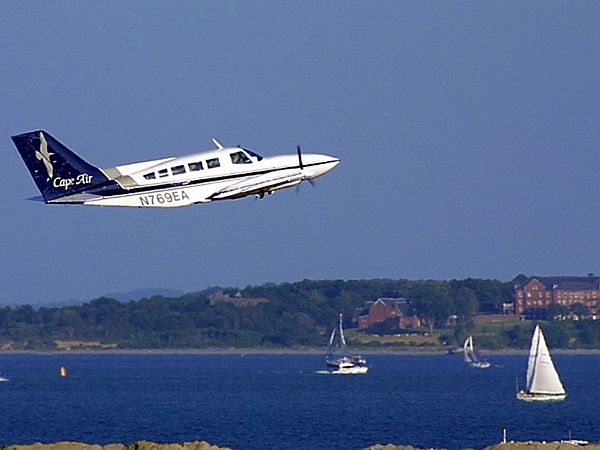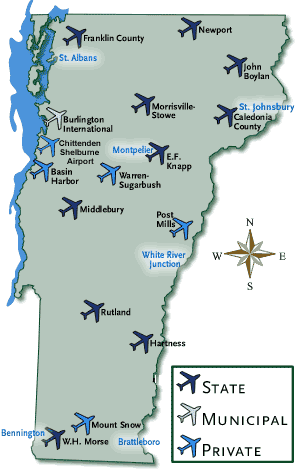
The twin-engine roar of a Cape Air nine passenger Cessna 402 is the sound of success at the state owned Rutland-Southwest airport.
State aviation director Guy Rouelle says a record 11,000 passengers flew out of Rutland last year, and the state expects a 25 percent increase this year. Cape Air recently added a fourth daily flight.
"It’s in the right place in the state and it’s a good partnership we have with them," he said. "It’s a JetBlue code share. So you can fly to Boston, and then fly to China, from Rutland."
Business is much, much slower at the state-owned Caledonia County airport in Lyndonville. There are no commercial flights. And on some days, no flights at all.
"You could go four or five days without a single plane," said Tim Peters of the Vermont Pilots Association. "And then on the sixth day you might have four or five flights. So that’s the typical operation of Caledonia County."
 The state Transportation Agency doesn’t expect every one of the 10 state-owned airports to be as successful as Rutland. But officials are trying to cut losses and improve financial performance. Some of the changes have been controversial, and it’s not yet clear whether the reforms will fly.
The state Transportation Agency doesn’t expect every one of the 10 state-owned airports to be as successful as Rutland. But officials are trying to cut losses and improve financial performance. Some of the changes have been controversial, and it’s not yet clear whether the reforms will fly.
At the Caledonia airport, officials replaced the private operator with a state employee in an effort to improve the bottom line.
Until the end of June, the Vermont Pilots Association was the Caledonia’s fixed based operator, or FBO. The association sold fuel and managed airport operations.
But the state imposed new management. The pilot’s association is out and a temporary state employee is now running the place.
The changes come as the state looks closely at how well all the publicly owned air fields are run. Guy Rouelle of the aviation division said contracts with private operators were recently reviewed at seven of the 10 airports, and three – Newport, Morrisville and Highgate – were found to be performing well.
"Four of the other airports in the state were running some pretty steep deficits," he said.
Caledonia airport cost the state about $50,000 last year, he said. The other financially troubled airports are Middlebury, Springfield’s Hartness Field, and the William H. Morse airport in Bennington.
Rouelle wants four minimum services at each airport: flight instruction, aircraft rental, fuel sales and a maintenance shop.
He said the state has added its own employees at some airports, and taken over operations such as fuel sales in order to erase deficits.
"The goal for the aviation program is to put these airports on a sustainable path where they not only are able to pay for themselves, but in addition to that are able to provide the public with all of the services that three of our airports are producing currently and are strong financial drivers for their region," he said. "And there’s no reason why these other airports cannot do the same."
The state’s approach is if they build it, the planes will come. So if an airport provides a mechanic or offers flight lessons, for example, officials expect demand to grow for that service.
But Peters at the Pilot’s Associations questions the logic. He said there’s never been a mechanic on hand at Caledonia. And student pilots can learn to fly at nearby Newport airport. He said a flight school is not financially viable at Caledonia.
"My personal opinion… is that there simply isn’t a market for these types of things," he said.
The effort to erase deficits at the state’s small airports is not new. Former Transportation Secretary David Dill recalls legislative debates in the 1990s that led to calls to close airports to save taxpayers money.
"The communities look at it as an economic development for the region, but a tool that should be supported b y the state and funded by the state for the benefit of the region," he said. "I don’t think that kind of dilemma has really changed."
Dill points out that other forms of transportation – such as public transit and rail – are also subsidized by taxpayers. He says the big question is whether it’s more efficient in the long run to have state employees run airport operations as opposed to private contractors.